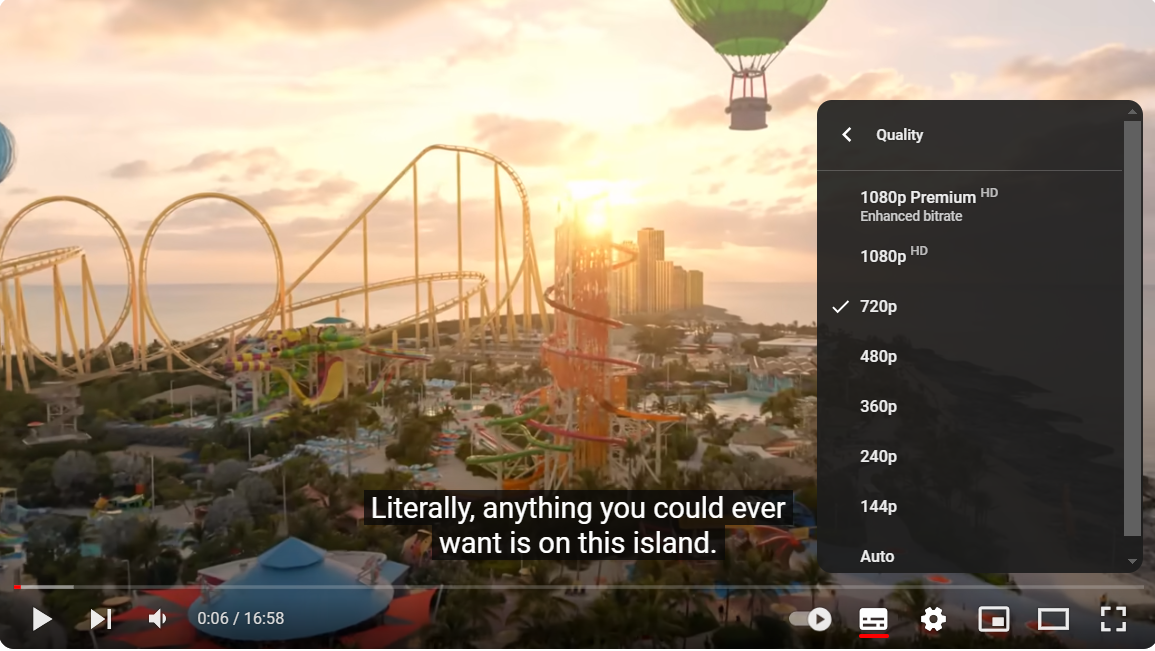YouTube video size might seem technical, but it is crucial to creating high-quality videos. In a platform overflowing with 2.7 billion monthly users, standing out on YouTube requires more than just uploading your content.
Let’s say you made a video with top-notch content and the best editing, but it lands nowhere! It’s a concern, right? No worries, I have conducted thorough research on YouTube video sizes and have some key pointers for you.
This article is your guide, breaking down the cryptic concepts of aspect ratios, file sizes, and resolutions into simple, doable steps.
So, whether you’re a YouTube veteran rocking a loyal following or a newbie taking your first steps, let’s crack the potential of your videos together.
Technical Requirements And Recommendations
YouTube video size matters, and thus, it becomes essential to understand how it works. Selecting the ideal size involves more than just numbers and pixels. It also involves balancing technical requirements, the user experience, and, most importantly, drawing in your audience.
With that said, let’s start with some basic yet misunderstood requirements!
1. Aspect Ratio
The 16:9 aspect ratio has long been the standard for the best viewing experience on YouTube.
However, there may be better choices for some videos. Its horizontal orientation can be restrictive at times. So, you must go for different aspect ratios according to your video.
Moving forward, the 9:16 aspect ratio is perfect for vertical videos suited for mobile viewing. It helps to grab attention easily and make viewers want to see more. Just remember, it’s like a narrow hallway – great for close-ups but not for big scenes.
If you want to make your YouTube shorts eye-catching, the 1:1 aspect ratio is the key. This boxy format stands out on social media, spotlighting your subject, like a portrait or product. But forget showing off expansive scenery or thrilling action – it’s not its forte.
Bonus: Increase the possibility of going viral by trying these YouTube short ideas!
2. Resolution
Another crucial element after the aspect ratio is the resolution of your YouTube video. The best resolution depends on your content, target audience, and desired quality. For most creators, 720p is the minimum HD starting point, especially for mobile viewers.

The other common YouTube resolutions are discussed further in the table. Before uploading your video, you should consider all these, but understanding their utility is important. Also, check out their correlation with dimensions:
| Dimensions | Resolution |
|---|---|
| 426 x 240 pixels | 240p |
| 640 x 360 pixels | 360p |
| 854 x 480 pixels | 480p |
| 1280 x 720 pixels | 720p |
| 1920 x 1080 pixels | 1080p |
| 2560 x 1440 pixels | 1440p |
| 3840 x 2160 pixels | 2160p (4K) |
| 7680 x 4320 pixels | 4320p (8K) |
Consequently, 1080p is the current sweet spot for many users and remains the most widely supported and enjoyed standard. But is it suitable for high-quality content?
For that, 1440p or 4K helps to target large displays or future-proofing.
3. File Size

YouTube currently enforces a 128GB maximum file size for uploads, with shorter videos allowing even bigger files. It is advisable to stay within these limits, though, as larger files result in longer upload delays and possible processing issues.
Hence, balancing the video quality and file size becomes essential. 1080p strikes a perfect balance for most content, offering strain-free internet bandwidth.
Nevertheless, compression is another good option to balance your video quality. Codecs like H.264 (AVC) and H.265 (HEVC) efficiently compress video data while maintaining quality.
Moreover, various platforms like Handbrake and others offer user-friendly options for compressing your video.
4. Video Format

While YouTube accepts a wide range of formats, I recommend using MP4 with the H.264 video codec and AAC audio codec for optimal quality and compatibility.
The officially supported video formats are:
- Standard Formats: .MOV, .MPEG-1, .MPEG-2, .MPEG-4, .MP4, .MPG, .AVI, .WMV, .MPEG-PS, .FLV, 3GPP, and WebM
- Professional Formats: DNxHR, ProRes, and CineForm
- Modern Format: HEVC (h265)
I have segregated the formats as per the user type here. However, if you need help deciding which format to use, converting your video to MP4 is always best before uploading.
How Video Size Impacts User Experience
Video size is a crucial factor in user experience for several reasons. More extensive videos consume more data, while small videos offer flexibility in sharing.
Other than this, your YouTube video size impacts the user experience in the following ways:
1. Loading Speed
Larger files with high resolution and no compression take longer to upload. This can lead to buffering issues, frustration at the user level, and excessive data usage.
On the other hand, small files with good resolution yet compressed offer a seamless viewing experience without lag at the user end.
So, videos with small sizes and different resolution options are the best for mobile devices especially. With it, users can access your content per their preferences and network conditions.
2. Visual Quality
You can always go for the maximum aspect ratio and thus fine video size, but everything goes in vain if the quality isn’t apt for the users.
Sometimes, large videos miss the spot with buffering issues at the user end, and likewise, small videos miss the finer details. Hence, using the optimum size per your targeted audience is your secret recipe.
3. Mobile Viewing
For most mobile viewers, the best YouTube size lies somewhere between balancing quality and data consumption. As a starting point, 720p is a good resolution, and 1080p is crucial for high-end visuals.
Additionally, a 16:9 aspect ratio is preferred for the best compatibility. You can manipulate other resolutions and aspect ratios as per content type.
Best Practices For Optimizing Video Size For YouTube
Optimizing the balance between video quality and file size when uploading videos on YouTube is essential. By using the right combination of format, resolution, and encoding settings, you can maximize visual fidelity without sacrificing user experience.
Here are some best practices to consider:
- Choosing the Right Settings: You must aim for 1080p for most content and reserve 4K/8K for some detailed projects.
- Compression Tools: Experiment with tools like Handbrake or Adobe Media Encoder for the perfect compression level.
- Thumbnails: Thumbnails are your video’s first impression. Hence, you must craft them creatively. Use the recommended 1280×720 pixel size for optimal display. Also, keep them clear, concise, and closely tied to your video content.
- Use the Right Frame Rate: Most videos use 24fps (film) or 30fps. So, you must not unnecessarily increase the frame rate as it inflates file size without significant benefits.
- Follow the Guidelines Set by YouTube: It’s always better to play by rules and tailor your video accordingly. It can help prevent upload errors and ensure your content reaches its intended audience effectively.
Additional Considerations
Along with technical specifications, other factors that affect YouTube video size include audience size, branding, and type of content. Here’s a quick breakdown of the same:
- Content-Type: Content-Type affects video size due to the interplay between format, quality, and intended use.
Although there is no rulebook to it, Vlogs and talking heads can shine at lower resolutions, prioritizing clarity without bloating file size. In contrast, nature documentaries and tutorials demand higher resolutions like 1080p or 4K.
- Target Audience: Like peanut butter and jelly, your target audience and video size are intertwined. If your target audience mainly uses smartphones, shorter videos with small sizes fare better.
Conversely, audiences with high-speed internet connections and larger screen devices may prefer higher-resolution videos for enhanced clarity and detail.
- Channel Branding: High-quality, consistent video size screams professionalism and respect for your audience, ensuring your brand experience shines throughout. So, you must choose appropriate sizes for different videos to avoid blurry messes.
Tools And Resources Creators Can Use
It’s not always possible to manually optimize your videos, and here’s where advanced tools come into play. You can use the following tools and software to make your YouTube videos shine.
1. Video Editing Software
Various video editing software offers built-in tools for managing your YouTube video size. Some of them are mentioned here:
- Adobe Premiere Pro
- PowerDirector 365
- FilmoraPro
- InShot
- Shortcut
2. Online Compression Tools
Several compression tools can help you with faster upload times, lower storage requirements, and better mobile viewing experiences. Here are some popular choices:
- VEED.IO
- Kapwing
- Handbrake Online
- Canva
- Flixier
3. YouTube Analytics
You can refer to the channel analytics to understand how video size affects engagement. Then, you can filter by video size and analyze buffering rate, playback errors, and average bitrate.
Remember to see if specific file sizes face higher issues on certain devices or network types. Then, based on these insights, you can optimize compression and encoding.
More Reads on YouTube:
Conclusion: Opt For 1080p Resolution And 9:16 Aspect Ratio For Vertical Videos
It is vital to understand the importance of YouTube video size as it directly impacts user experience and engagement. Opting for 1080p resolution is generally suitable for most content while leveraging compression tools ensures mobile-friendly sizes without compromising clarity.
Furthermore, balancing quality, file size, and user experience is crucial for YouTube’s success. Aim for the sweet spot! Minimum resolution (426×240) is a no-go, and although 8K sounds amazing, only some have the bandwidth.
Overall, you must consider your audience’s devices and internet speeds. Cater to high-engagement content with higher resolutions but prioritize smooth playback for everyone.